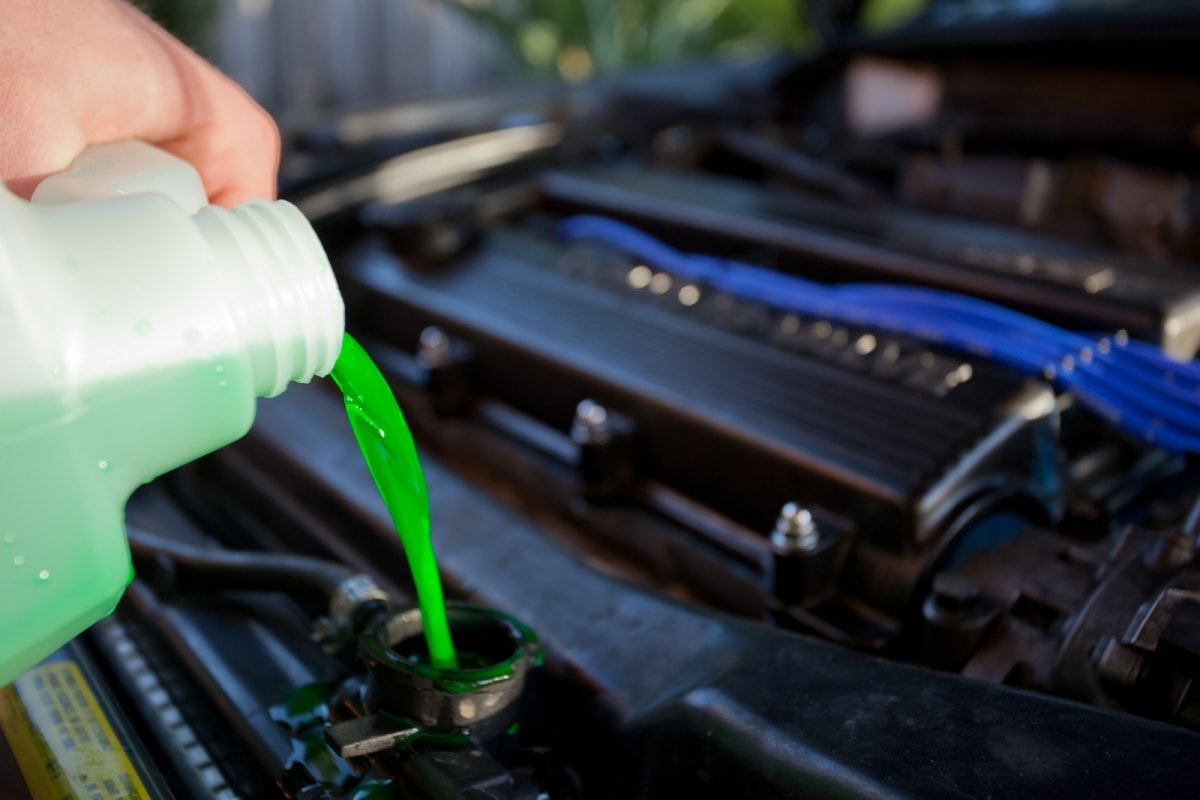Introduction
It’s now the time of year to consider changing the engine coolant in your truck. By staying on top of this maintenance for your vehicle, you’ll prevent dirt and other debris from clogging the radiator in the warmer months of summer. The frequency of how often you should change your engine coolant depends on your driving habits, and the temperature you operate your vehicle in most often. “Most car manufacturers recommend that you change the radiator fluid in your vehicle every 24,000 to 36,000 miles, or every 24 to 36 months.” (http://www.carsdirect.com) A radiator flush is also sometimes referred to as an antifreeze flush.
 Instructions
Instructions
Before you get started, please note that if you’ve mixed different types of coolant in your radiator at any point, it’s safer to have a professional change your radiator fluid as complications may arise. However, if you’re “on schedule for a coolant change and your coolant is free of brown, gunky corrosion (extract a little coolant with a baster to examine it), you can skip the flush procedure and perform a simple drain and refill operation yourself.” (www.familyhandyman.com)
Step 1: Ensure Your Engine is Off and Cooled Down
Turn off the truck’s engine and let it cool down completely. The best time to perform a coolant fluid change is early in the morning. Choose a day when you are not going to need to use the car for several hours. You can also help the engine cool faster by leaving the hood open.
Step 2: Take Off the Engine’s Radiator Cap
Once you’ve ensured the engine is completely cooled down, you can remove the radiator cap. It’s important not to try to remove the cap when the engine is still warm, as steam may escape and cause burns and other injuries.
Step 3: Drain the Old Coolant
Place the bucket underneath the radiator and then open the drain plug for the fluid to drain out of the radiator. Once all the old coolant fluid has drained from the radiator, replace the plug and then empty the bucket.
Step 4: Clean the Cooling system
Using the soft nylon brush, scrub off the accumulated sediment and rust from the cooling system. After that, fill the radiator with distilled water and then turn on your car’s engine and let it idle for about 15 minutes (but do not drive). This is to clean out all the dust and rust that are present in the radiator and engine. After 15 minutes, drain the water just like you did with the old fluid. Repeat the process until the water runs clear. Give the engine about 10 minutes to cool and then replace the drain plug. At this point, you can replace any worn or damaged hoses or clamps, if necessary.
Step 5: Add New Coolant
The ideal coolant mixture should comprise of 50 percent water and 50 percent antifreeze. Be sure to use distilled water in this formula as it is free of minerals contained in tap water. Since most radiators accommodate about 2 gallons of fluid, you should be able to judge the amount of fluid your radiator needs.
Step 6: Bleed the Cooling System
After adding the new coolant, it is time to bleed out the pockets of air that may be present in the cooling system. Turn on the engine with the radiator cap off so as to prevent pressure from building up. Let the engine run for about 10 to 15 minutes to let the coolant circulate freely inside the radiator and allow any trapped air to dissipate. Fill the space with more coolant fluid and then close the cap tightly. Now your radiator has new coolant fluid and your car is good to go.
Note: Used coolant is toxic waste. Pour it into a screw-cap plastic container and drop it off at a recycling center. Sweet-tasting coolant is irresistible to pets—and poisonous… soak up any spills with paper towels or rags immediately if you have pets wandering around.
Summary
Maintaining the health of your engine by flushing your radiator is a good idea. This allows your engine to run smoother and eliminates the grime that has built up in the system over time. Be sure to follow your vehicle’s manufacturer recommendations. “If you are comfortable working on your own vehicle, a radiator flush is a pretty straightforward procedure. If you are not comfortable doing the work, having it done by a professional is fairly inexpensive. You should be able to get it done for less than $100.” (http://www.carsdirect.com)
Editorial Credit: EvelynGiggles / CC BY